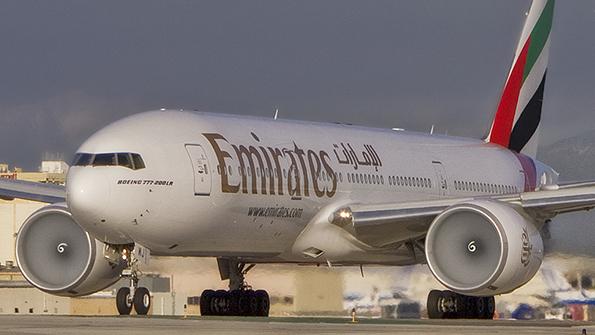ANALYSIS: Middle East Carriers Hampered By Slow Return Of Long-Haul Services

Like every other regional market, the Middle East has seen passenger numbers plummet. With many local airlines heavily reliant on long-haul services, and the major Middle Eastern carriers of Etihad Airways, Emirates Airline and Qatar Airways depending on their global hubs, the road back is likely to be rocky because of the anticipated extended recovery of long-haul international service.
Consultant Saj Ahmad, chief analyst at StrategicAero Research, says all the region’s airlines face the same problem: the rapidly changing national quarantine regulations that make it difficult to plan international services. Ahmad believes that Dubai-based Emirates will recover fastest.
“When you look at Emirates, which has a huge footprint in Europe, they are ramping up flights quite quickly,” he told ATW.
They are helped in this, he said, by Dubai having a slightly less stringent approach to transit passengers during the coronavirus crisis than some other Gulf airports.
Abu Dhabi-based Etihad, he said, was still trying to define its future shape, moving from super-connector to a point-to-point carrier (a role that may be helped by the emirate’s recent emphasis on promoting itself as a tourist destination), while he believed that Qatar Airways was struggling to fill seats more than its competitors.
Smaller carriers in the region face differing futures, Ahmad said. Gulf Air suffers the double disadvantage of its Bahrain base not being a major transit hub and coming very late to the tourism destination market. But Oman Air, he believes, could emerge as one of the winners. Much smaller than the UAE and Qatar carriers, Oman Air is burning through less cash and has the necessary agility to respond to new operating conditions. Oman also has an increasingly strong inbound tourism offering, Ahmad says.
Elsewhere in the region, Ahmad believes that EgyptAir will continue to be supported by the state, essentially as a national job creation program.
John Strickland, director of JLS Consulting, also believes that the fortunes of the Middle East “big three” will vary.
“Emirates has got to wrestle with lack of demand, given the large size of its aircraft [Airbus A380s and Boeing 777-300ERs], but it is already adapting capacity on parts of its network via its partnership with flydubai [a 737-800 operator] and it is likely that it will extend this, Strickland said. “Additionally, it has orders for smaller widebodied aircraft that will increase its network flexibility over the coming years.”
Etihad, he noted, has been going down the track of operating smaller widebodies and was scaling down its fleet before the COVID-19 outbreak and parked its A380s, while Qatar Airways has also stored its A380s and already has a varied fleet, which could be used to adapt to changing demand levels on individual routes.
“I think all three have the potential to recover, but possibly with a more conservative level of capacity,” Strickland says.
LCC growth
He believes the regional LCC market will continue to grow, buoyed by continuing strong flows of expatriate workers, notably from the Indian subcontinent and Egypt.
“Places like Saudi Arabia have very young populations that want to travel,” he notes.
Two major regional talking points are the future of LCCs, several of which have sprung up in recent years, and the shockwave of the diplomatic rapprochement between Israel on the one hand and the UAE and Bahrain on the other.
Despite the reservations of Qatar Airways Group CEO Ahmed Al Baker, who told a Routes webinar earlier this year that LCCs would have limited appeal in the region, LCCs see themselves as the growing part of the Middle East air travel pie.
Con Korfiatis, CEO at Saudi Arabia LCC flyadeal, said airlines such as his are both attracting previous non-flyers and encouraging existing passengers to do so more often.
Attention is focused on Abu Dhabi, where two new LCCs—Air Arabia Abu Dhabi (AAAD) and Wizz Air Abu Dhabi (WAAD)—will go head-to-head.
AAAD, a joint venture with Etihad, launched first, operating initially to regional destinations, while WAAD, an offshoot of still-expanding Hungary-based Wizz Air, twice pushed back its starting date because of Abu Dhabi’s strict quarantine regulations, but expects to launch in November.
Wizz CEO József Váradi has made his ambitions clear, saying that WAAD will offer not only intra-Gulf services but look northwest to Europe and east to the Indian subcontinent, and aims to have 100 aircraft based in the Gulf by 2035.
The new Israeli connection, meanwhile, will undoubtedly produce new traffic flows in the region, notably among young people keen to see areas of the region previously denied to them. How strong those flows will be in the long term remains to be seen.


